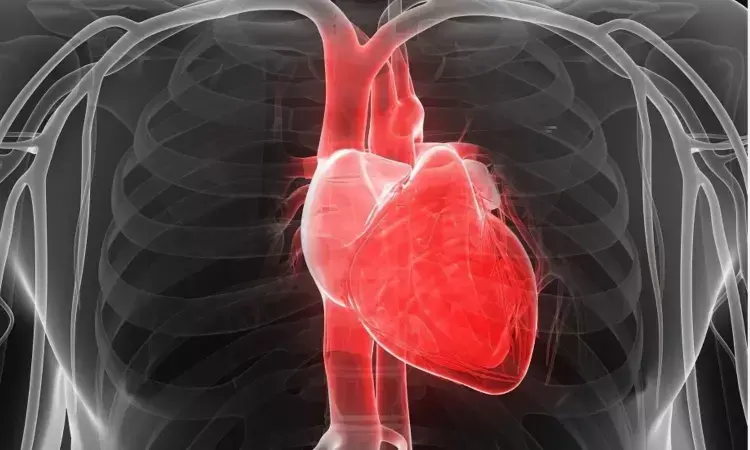- Home
- Medical news & Guidelines
- Anesthesiology
- Cardiology and CTVS
- Critical Care
- Dentistry
- Dermatology
- Diabetes and Endocrinology
- ENT
- Gastroenterology
- Medicine
- Nephrology
- Neurology
- Obstretics-Gynaecology
- Oncology
- Ophthalmology
- Orthopaedics
- Pediatrics-Neonatology
- Psychiatry
- Pulmonology
- Radiology
- Surgery
- Urology
- Laboratory Medicine
- Diet
- Nursing
- Paramedical
- Physiotherapy
- Health news
- Fact Check
- Bone Health Fact Check
- Brain Health Fact Check
- Cancer Related Fact Check
- Child Care Fact Check
- Dental and oral health fact check
- Diabetes and metabolic health fact check
- Diet and Nutrition Fact Check
- Eye and ENT Care Fact Check
- Fitness fact check
- Gut health fact check
- Heart health fact check
- Kidney health fact check
- Medical education fact check
- Men's health fact check
- Respiratory fact check
- Skin and hair care fact check
- Vaccine and Immunization fact check
- Women's health fact check
- AYUSH
- State News
- Andaman and Nicobar Islands
- Andhra Pradesh
- Arunachal Pradesh
- Assam
- Bihar
- Chandigarh
- Chattisgarh
- Dadra and Nagar Haveli
- Daman and Diu
- Delhi
- Goa
- Gujarat
- Haryana
- Himachal Pradesh
- Jammu & Kashmir
- Jharkhand
- Karnataka
- Kerala
- Ladakh
- Lakshadweep
- Madhya Pradesh
- Maharashtra
- Manipur
- Meghalaya
- Mizoram
- Nagaland
- Odisha
- Puducherry
- Punjab
- Rajasthan
- Sikkim
- Tamil Nadu
- Telangana
- Tripura
- Uttar Pradesh
- Uttrakhand
- West Bengal
- Medical Education
- Industry
Co-existing non-ischemic cardiomyopathy may hamper benefits of revascularization for obstructive CAD: Circulation

USA: A recent study has identified non-ischemic cardiomyopathy (NICM) or dual CM in 1 of every 6 patients in those with coronary artery disease (CAD) and was linked with worse long-term outcomes compared with ischemic cardiomyopathy. The findings were published online in Circulation on November 6, 2023.
"Coincidental NICM or dualCM may contribute to the lack of prognostic benefit from coronary revascularization in patients with obstructive CAD," the researchers wrote in their study.
Randomized trials in obstructive CAD have largely shown no prognostic benefit from coronary revascularization. There are several potential reasons for the lack of benefit but an underexplored possible reason is the presence of coincidental NICM. Parag Bawaskar, University of Minnesota Medical School, Minneapolis, MN, and colleagues investigated the prevalence and prognostic significance of NICM in patients with CAD (CAD-NICM).
For this purpose, the researchers conducted a registry study of consecutive patients with obstructive CAD on coronary angiography who underwent contrast-enhanced CMR (cardiovascular magnetic resonance imaging) for assessing ventricular function and scar at 4 hospitals from 2004 to 2020.
They identified the cause and presence of cardiomyopathy using coronary angiography data and CMR, blinded to clinical outcomes. The primary outcome was determined as a composite of heart failure (HF) hospitalization or all-cause death, and secondary outcomes were cardiovascular death, HF hospitalization, and all-cause death.
The study led to the following findings:
- Among 3,023 patients (median age 66 years, 76% men), 64.8% had ischemic cardiomyopathy (CAD+ICM), 18.2% had no cardiomyopathy (CAD+noCM), 9.3% had CAD+NICM, and 7.7% had dual cardiomyopathy (CAD+dualCM) defined as both ICM and NICM. Thus, 16.9% had CAD+NICM or dualCM.
- During a median follow-up of 4.8 years, 1,116 patients experienced the primary outcome.
- In Cox multivariable analysis, CAD+NICM or dualCM was independently associated with a higher risk of the primary outcome compared with CAD+ICM [adjusted hazard ratio (HR) 1.23] after adjustment for potential confounders.
- The risks of the secondary outcomes of all-cause death and HF hospitalization were also higher with CAD+NICM or dualCM (HR 1.21 and HR 1.37 respectively), while the risk of cardiovascular death did not differ from that of CAD+ICM (HR 1.15).
"NICM or dualCM was identified in 1 of every 6 patients and was associated with worse long-term outcomes compared with ICM in CAD patients referred for clinical CMR," the researchers wrote.
"Coincidental NICM or dualCM may contribute to the lack of prognostic benefit from coronary revascularization in patients with obstructive CAD," they concluded.
Reference:
Bawaskar P, Thomas N, Ismail KF, Guo Y, Chhikara S, Athwal PSS, Ranum A, Jadhav A, Hooker Mendez A, Nadkarni I, Frerichs DR, Velangi PS, Ergando T, Akram H, Kanda A, Shenoy C. Non-ischemic or Dual Cardiomyopathy in Patients with Coronary Artery Disease. Circulation. 2023 Nov 6. doi: 10.1161/CIRCULATIONAHA.123.067032. Epub ahead of print. PMID: 37929565.
Dr Kamal Kant Kohli-MBBS, DTCD- a chest specialist with more than 30 years of practice and a flair for writing clinical articles, Dr Kamal Kant Kohli joined Medical Dialogues as a Chief Editor of Medical News. Besides writing articles, as an editor, he proofreads and verifies all the medical content published on Medical Dialogues including those coming from journals, studies,medical conferences,guidelines etc. Email: drkohli@medicaldialogues.in. Contact no. 011-43720751


